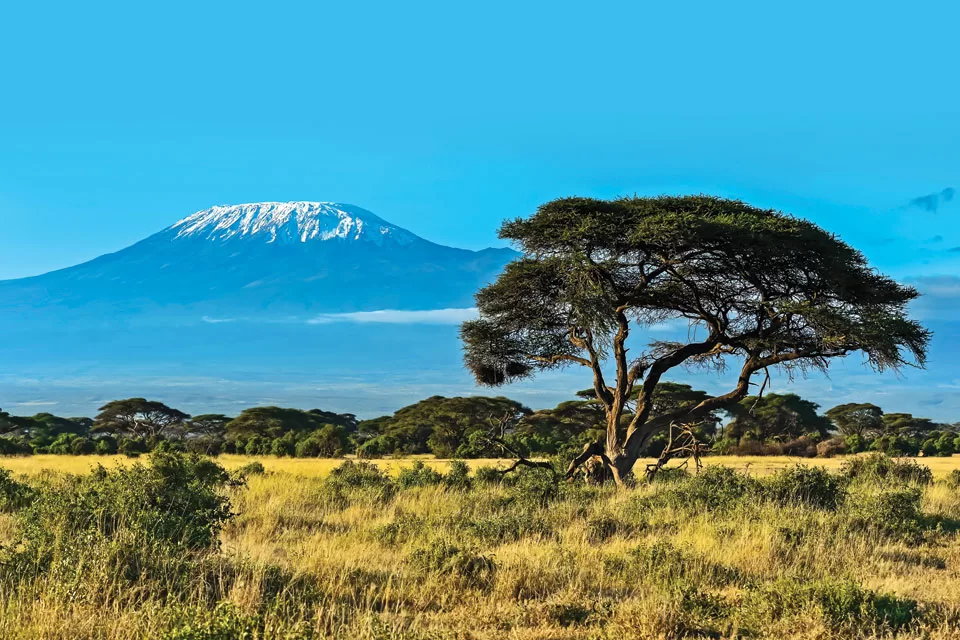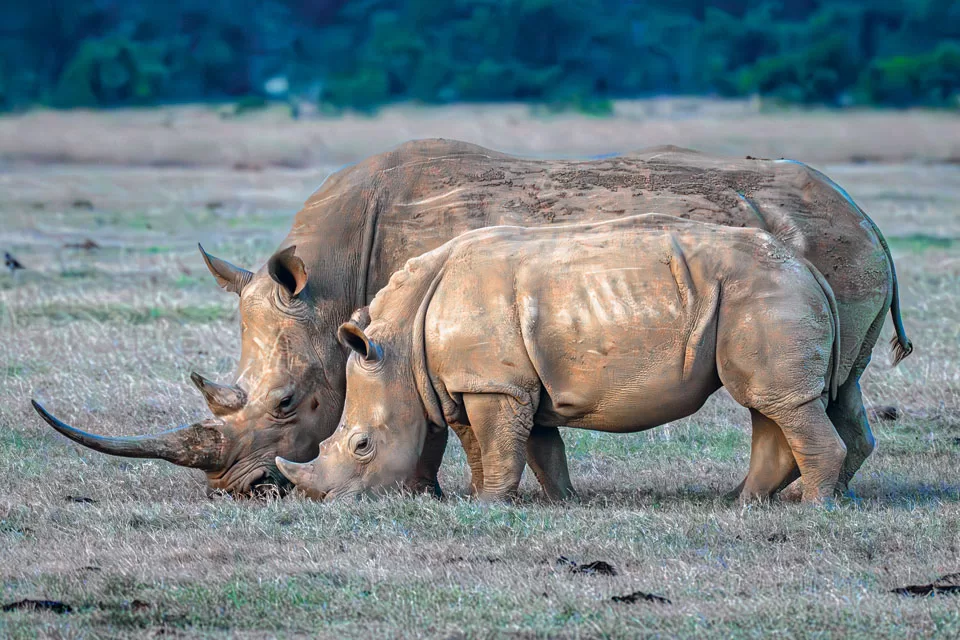
The Northern White Rhino is considered functionally extinct. The northern white rhinoceros or northern white rhino is one of two subspecies of the white rhinoceros, the other being the southern white rhinoceros.
There are only two northern white rhinos left in the world, both females named Najin and Fatu, who live at the Ol Pejeta Conservancy in Kenya! They are mother and daughter.
The subspecies is considered functionally extinct because the last male died in 2018, and these two females cannot reproduce naturally. However, scientists are working to save the species through assisted reproductive technologies like in-vitro fertilization using stored embryos and sperm from deceased males.
Its decline and near extinction were caused primarily by poaching for its horn in the illegal wildlife trade, and habitat loss due to human encroachment and civil conflict in its native Central African range.
Northern white rhinos, like their close cousin the southern white rhino, feed exclusively on short grass.
The lifespan of a northern white rhino varies, with wild individuals potentially living 40-50 years.
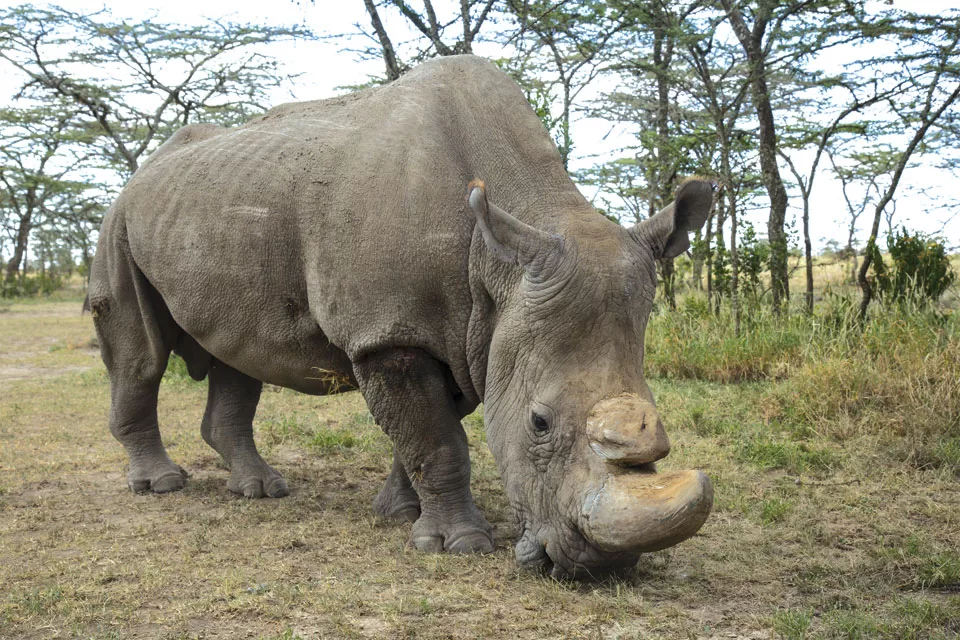
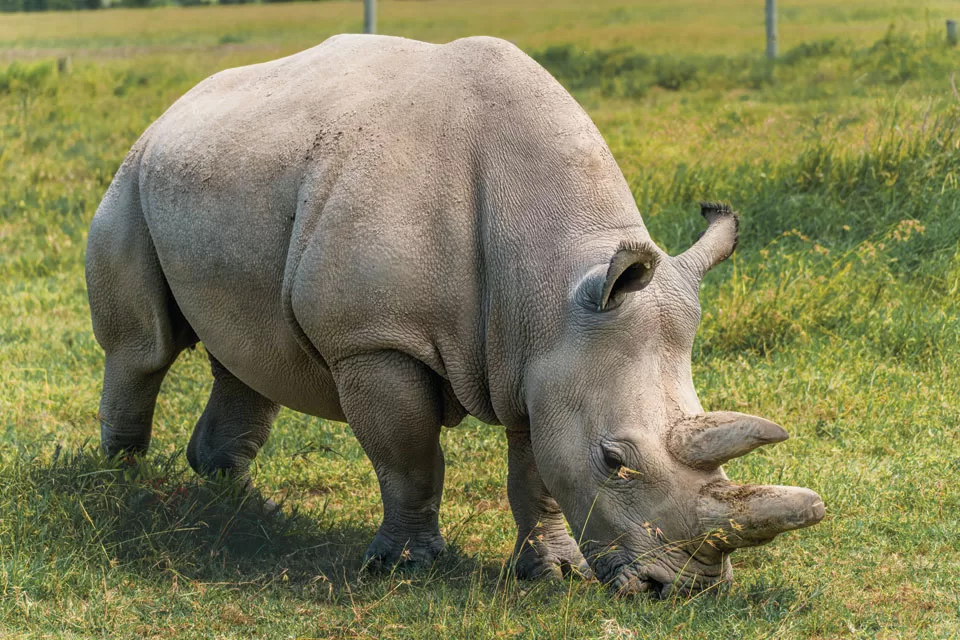
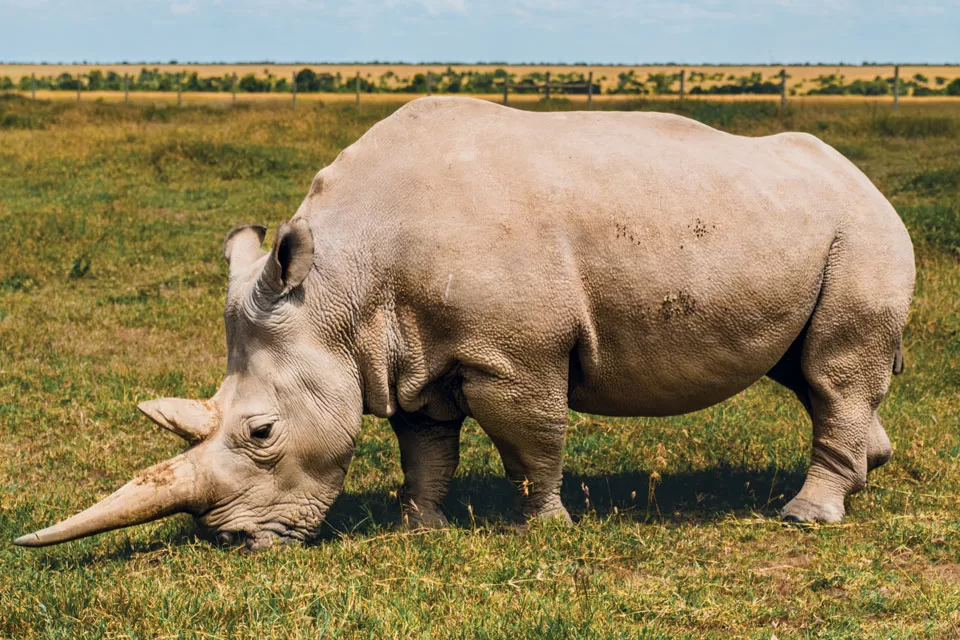
The northern white rhino is a large, gray herbivore with a broad, square muzzle for grazing, two horns, and sparse hair. It is generally smaller, lighter, and less hairy than its southern counterpart, with a straight back, a flatter skull, and longer legs.
They have excellent hearing and smell but poor vision, relying on these senses to detect threats in their savanna habitats.
Established in 1964, the International Union for Conservation of Nature’s Red List of Threatened Species has evolved to become the world’s most comprehensive information source on the global extinction risk status of animal, fungus and plant species.
According to ICUN many species groups, including mammals, amphibians, birds, freshwater fishes, reef building corals and trees, have been comprehensively assessed. As well as assessing newly recognized species, the IUCN Red List also reassesses the status of some existing species, sometimes with positive stories to tell. For example, good news such as the down-listing (i.e. improvement) of a number of species on the IUCN Red List categories scale due to conservation efforts. The bad news, however, is that biodiversity is declining. Currently, there are more than 169,000 species on The IUCN Red List, with more than 47,000 species threatened with extinction.
